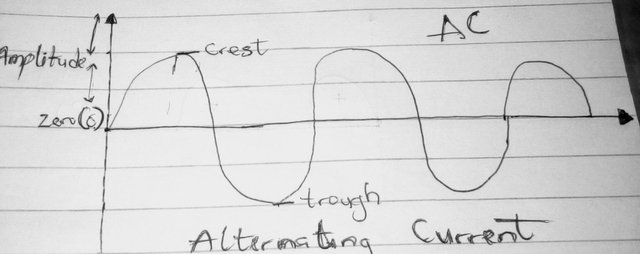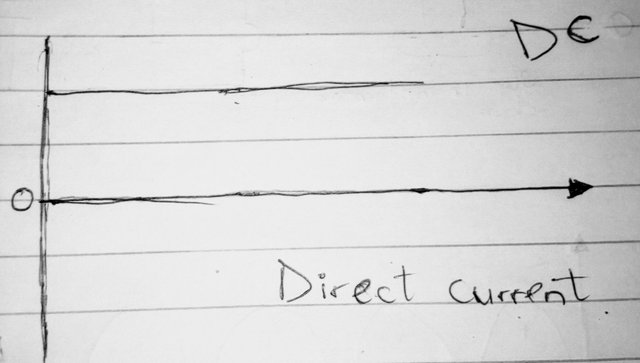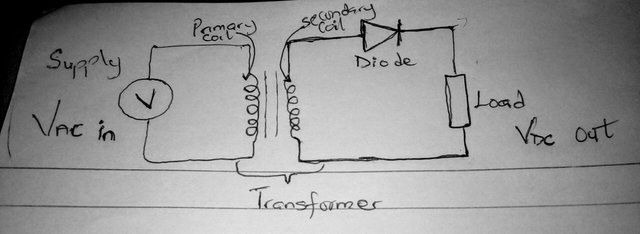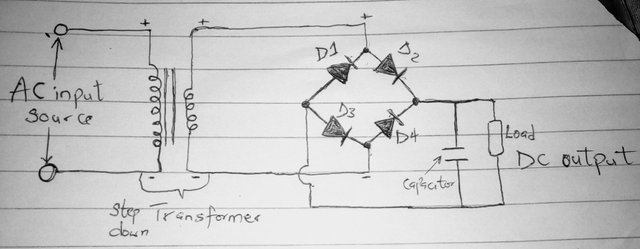Hello powerful steemians, I hope your day is going well. Today, I want to talk about an electronic component called Rectifier.

A rectifier is not something we see everyday but no single electronic gadget in our homes can function without it. Gadgets like the phone, fan, air-conditioner, television, radio and all other home electronics you can think of makes use of a rectifier. The closest to us is our mobile phone. just so you know, the function of the phone charger which you use every day is for rectification and hence the phone charger is an example of a rectifier. Amazing right? Let me start by saying that we have two types of current namely;
• Alternating Current (A.C)
• Direct Current (D.C)
What is Alternating current (A.C)
The Alternating current (A.C) can be described as a current that flows from zero to maximum and back to zero at the positive side of the curve and repeats the same for the negative side. It's movement is sinusoidal such that the wave continues.

image created by gabikay
In ordinary terms, the characteristic of A.C makes it suitable for distribution of electrical Power to a very long distance. So technically speaking, Alternating current is used to power out homes but all electronics at our homes require Direct current for their proper functioning.
What is Direct Current (D.C)
Direct current is an electric charge that flows in one direction only. This implies that it can only travel a limited distance because it will continue to diminish until it is completely exhausteday at some point and hence will require power to be disbursed from source again.

image created by gabikay
However, the ups and downs of the A.C is the reason for it's popular choice of use for electrical power distribution. Remember that all electronics at home irrespective of it's size requires a D.C . It is important to know that what travels through the cables in our homes down until our wall socket ( where we can plug in our gadgets) are all A.C. Since the electronics need D.C to function, there is a need to convert A.C to D.C and here the function of a rectifier comes in.

What is a Rectifier?
A Rectifier is an electronic device that converts an A.C to a D.C. The main component of a rectifier is the diode. There are two types of rectifiers namely
• Half wave Rectifier
• Full wave Rectifier
1. The half wave Rectifier
The half wave Rectifier is one that makes use of one diodes. Most times, the A.C has to pass through a transformer first before getting to the rectifier. This is for the purpose of reducing the voltage that exit in the A.C. In my country Nigeria, the single phase voltage ranges from 220 volts to 240volts and this is the voltage that exist in the wall socket but every gadget has its own voltage rating less than the single phase voltage (example: checkout out your smart phone charger for it's voltage rating).

image created by gabikay
From the diagram above, the voltage has left the source (wall socket) and has been reduced by a step down transformer. Next, the half wave rectifier is connected to the output end of the transformer. Notice the configuration of the diode ( forward biased and connected to the positive output end of the transformer).
However, the effect of the half wave Rectifier can be seen on the wave form of an oscilloscope. The aim of the rectifier as concerned with the oscilloscope is to make the wave of the voltage appear either on the up side only or the down side only of the oscilloscope waveform. This means that there will be only crests with no troughs or only troughs with no crest. However in the half rectification, one of the waves sides (negative or positive side) is being eliminated. So, the wave produced by a half Rectifier wave will look like the picture below.

image created by gabikay
Full Wave Rectifier
This kind of Rectifier makes use of 4 diodes connected end to end such that each two diodes will resist current flow allowing only two diodes to funtion at a time. Depending on the configuration of the diode, it could clip to the negative side of the wave form or to the positive side of the waveform but in every wave it makes, it has both the positive and the nagative waves all represented on the wave. The wave looks like the letter "m" but in a continuous manner.

image created by gabikay

image created by gabikay
It is called full Wave rectifier because the effect of the Rectifier when viewed with an oscilloscope will clip both the positive and negative wave on one side of the waveform unlike the Half wave Rectifier that will only clip either the positive or negative wave to one side of the waveform.
What happens after Rectification
Well, remember that the AC has just been converted to DC and is ready to be delivered to the electronic circuit but there will still exist a very little quatity of stubborn AC ripples still mixed with the DC . At this point, a capacitor is connected to the output end of the the rectifier and then to the circuit. The capacitor is connected to seive away those stubborn AC signals.

Conclusion
All that has been said in a brief statement is that the Rectifier is an electronic device that convert AC signals to DC signal. The process starts from the AC source to the stepdown transformer to the Rectifier down to the capacitor and then the load. The rectifier is usually made up of one or four diodes to correspond to half or full Wave rectifier respectively. The presence/ function of a rectifier cannot be overlooked in an electronic gadget/circuit.
Thank you for reading through my blog today.

.jpeg)
If your publication is exclusive to Steemit, it is necessary to place the #steemexclusive tag among the first 5 tags, to have the possibility of obtaining support.
@daytona475
Thanks!
Downvoting a post can decrease pending rewards and make it less visible. Common reasons:
Submit
Thank you, @daytona475 for the info. I have added the steemexclusive tag.
Downvoting a post can decrease pending rewards and make it less visible. Common reasons:
Submit